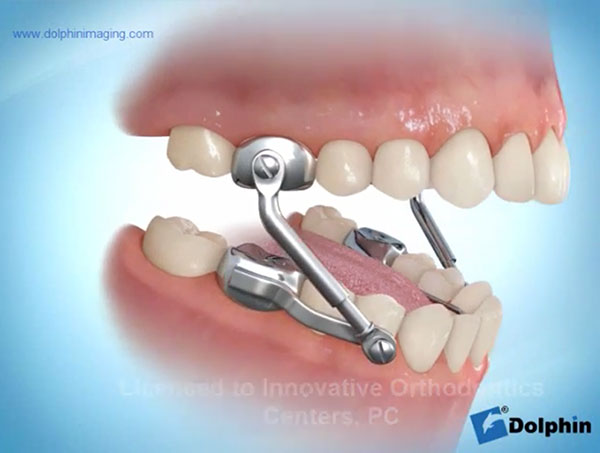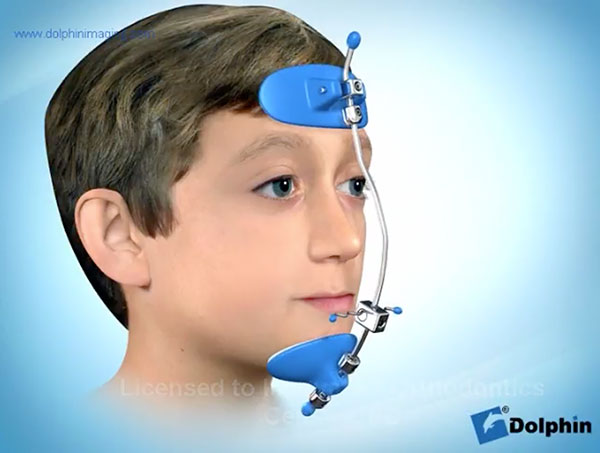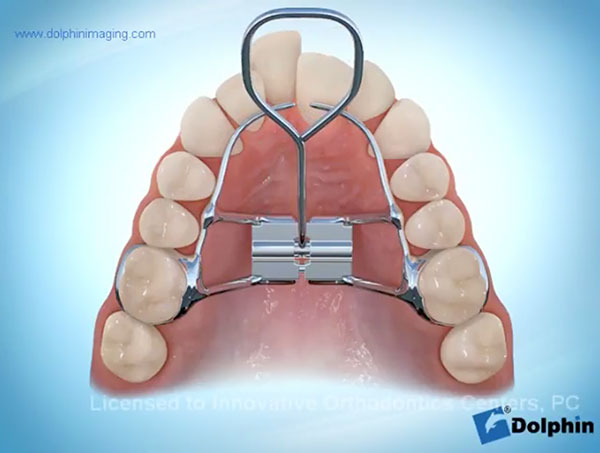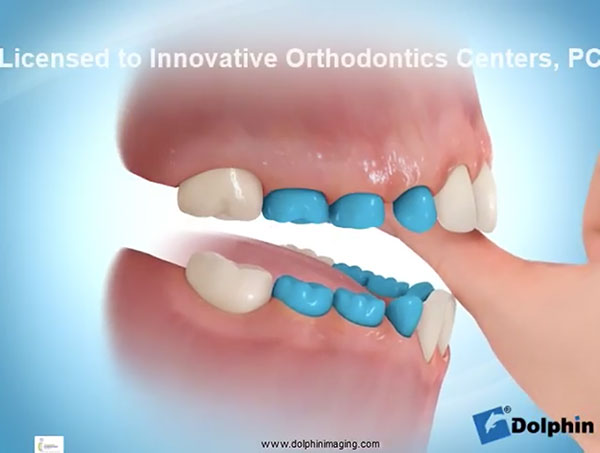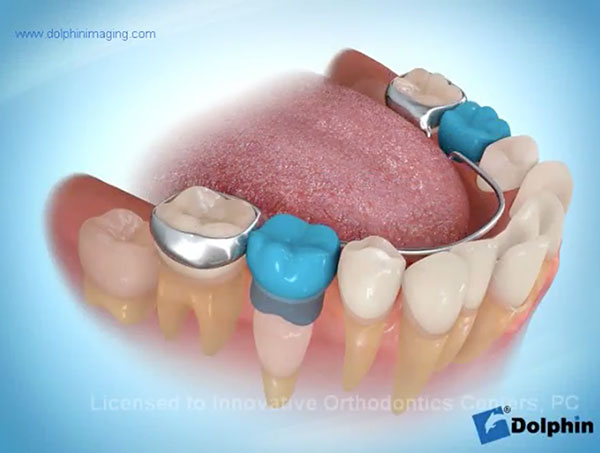Hey, we all need a little help from our friends sometimes, and braces and Invisalign® are no exception. When they can’t do the job alone, other appliances will be recommended to enable you or your child to achieve the best possible results. Here are some of the basics when it comes to common orthodontic appliances:
Herbst
The Herbst appliance consists of four stainless steel bands that fit like rings around your back molars – one in each corner of your mouth. Two metal cylinders, or sleeves, are attached to the upper molar bands. Attached to the lower molar bands are two metal bars that run parallel to your lower back teeth and two metal rods, or arms, that slide into the sleeves hanging down from the upper molar bands.
Depending on your needs, your appliance might also have an upper expander that covers the roof of your mouth and has a screw located in the middle of your palate. The Herbst appliance typically stays in your mouth for a year from the time the arms are placed.
Herbst Appliance Before and After
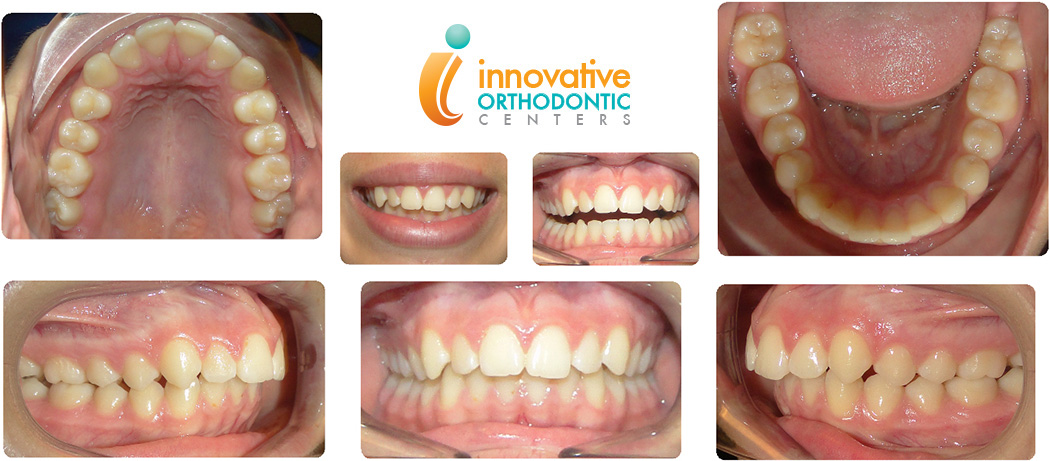
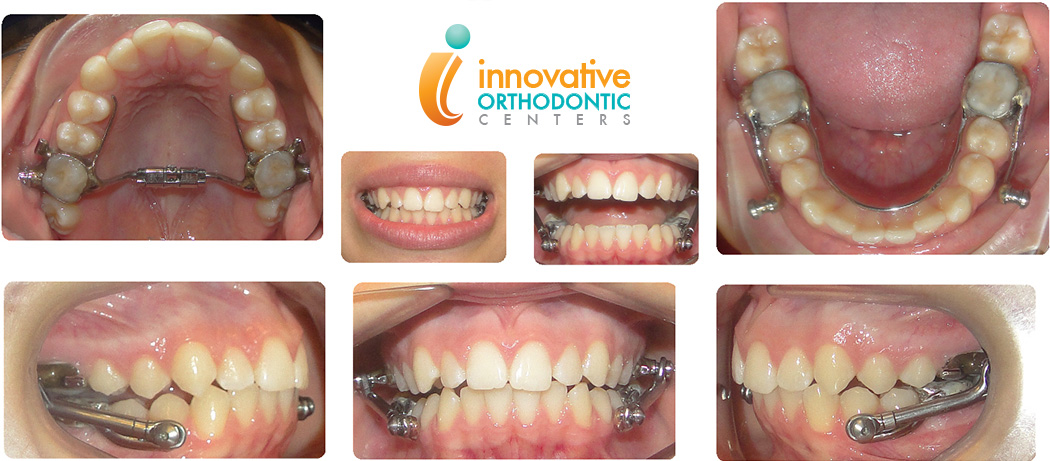
How Does the Herbst Work?
If a patient has a small bottom jaw that’s causing a large overbite, we sometimes use the Herbst. We don’t use headgear at our practice, which is the older way of making the upper jaw smaller to match the bottom jaw. Instead, we use the Herbst to only treat the jaw that needs to be improved, meaning we encourage the lower jaw to grow to the correct size so the overbite goes away.
The appliance works by using a system of metal sleeves, bands and rods to hold the lower jaw forward and encourage it to grow. We give our patients the option of either braces or Invisalign for the actual teeth correction (see our Herbst appliance before and after pictures for real-life results) while the Herbst works on the jaw correction.
Over time, the lower jaw grows into its new position and your overbite disappears! It takes about nine to 12 months. Depending on your needs, there may also be an upper expander with expansion screws that are used to make room for crowded teeth by widening the dental arch and further helping to fix the bite.
A Word to Parents
The Herbst is an orthopedic appliance that encourages the lower jaw to grow and catch up with the size of the upper jaw and face, eliminating a patient’s overbite. It can really make magic happen and help your child avoid jaw surgery as an adult. It has worked miracles for hundreds of children in our office. So, parents, keep this in mind during the first week of treatment if the going gets tough! Your kiddo will quickly accept this mechanical distraction and things will return to normal. Call us any time if you have a question, problem or concern. Your support and partnership are invaluable to our team and your child!
What to Expect With the Herbst Appliance
- It’s normal for the Herbst to feel a tiny bit bulky for the first week but you’ll get used to it.
- It takes a few days for the mouth to toughen up, so if the appliance is irritating any areas of your cheeks or gums, cover the part of the Herbst that’s bothering you with wax to act as a cushion. You can also mix ½ teaspoon of salt with eight ounces of warm water and swish the solution in your mouth as needed.
- If you find that you talk a little funny or it feels strange to swallow during the initial days of wearing the Herbst, don’t avoid these activities. We promise everything will return to normal but to speed things up, read aloud, talk on the phone a lot and keep swallowing!
- Not everyone needs expansion but if you do, follow the specific instructions we give you and if your teeth or jaws get a little sore when you turn the expansion screw, take the appropriate dose of an over-the-counter pain reliever like Advil or Tylenol.
- Try to avoid yawning too wide or showing your friends how far you can open your mouth so your appliance doesn’t come apart. If it does, you can usually reassemble it by following the directions given to you by Dr. Ibrahim or Dr. Gin.
Herbst with Braces
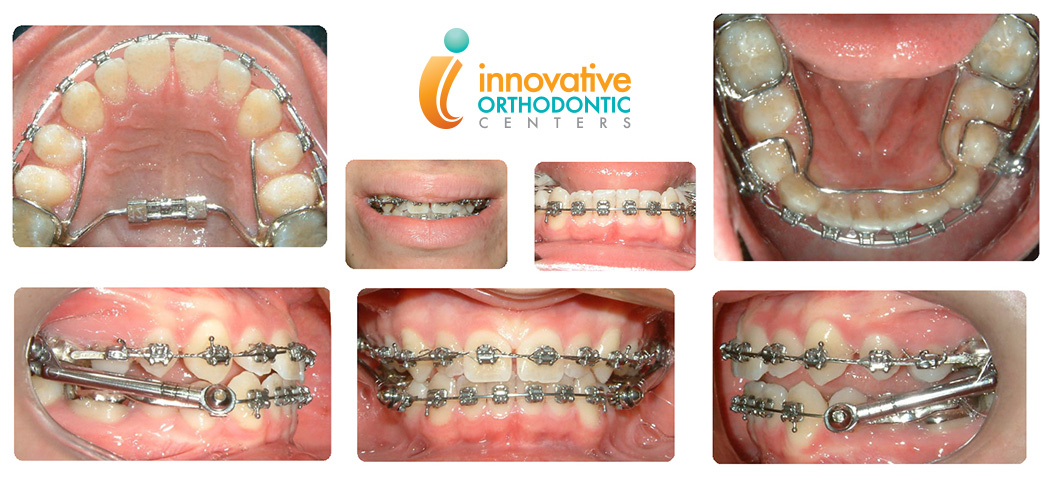
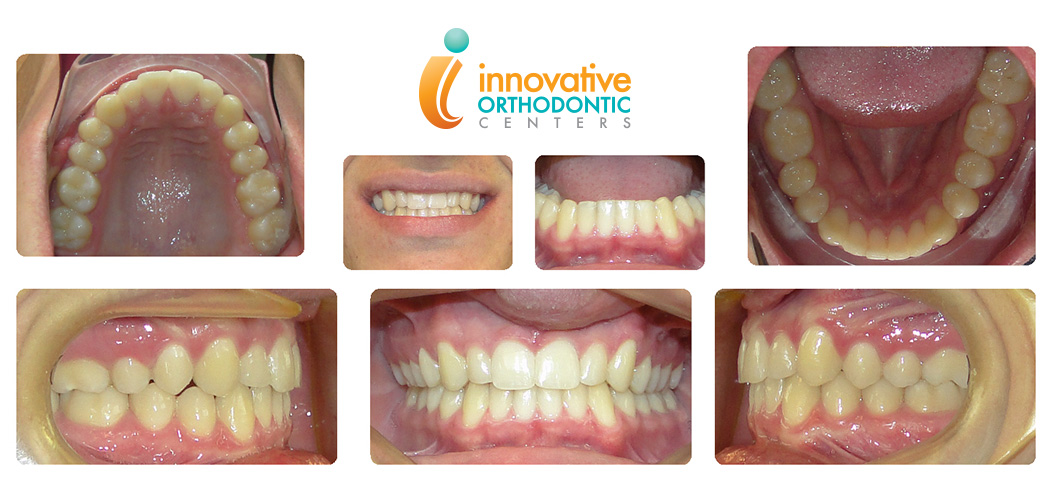
Herbst with Invisalign
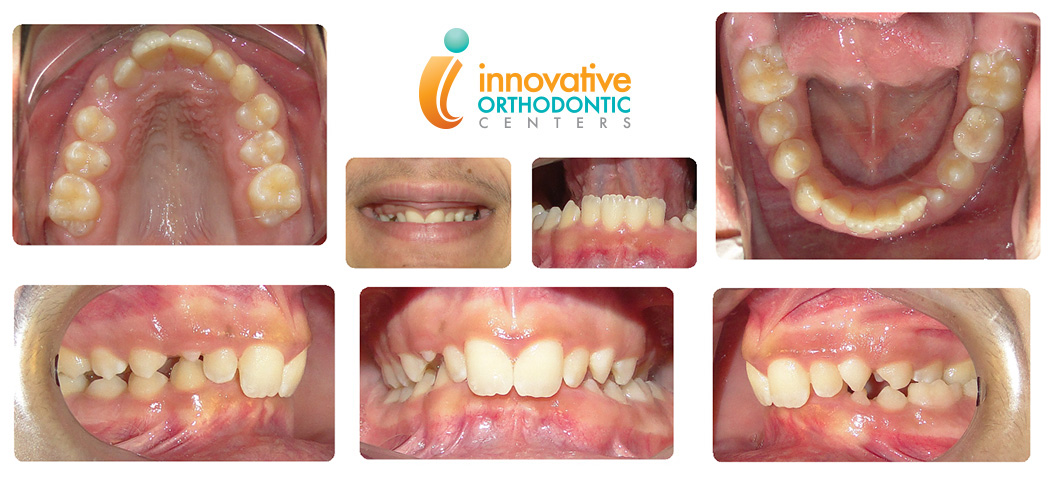
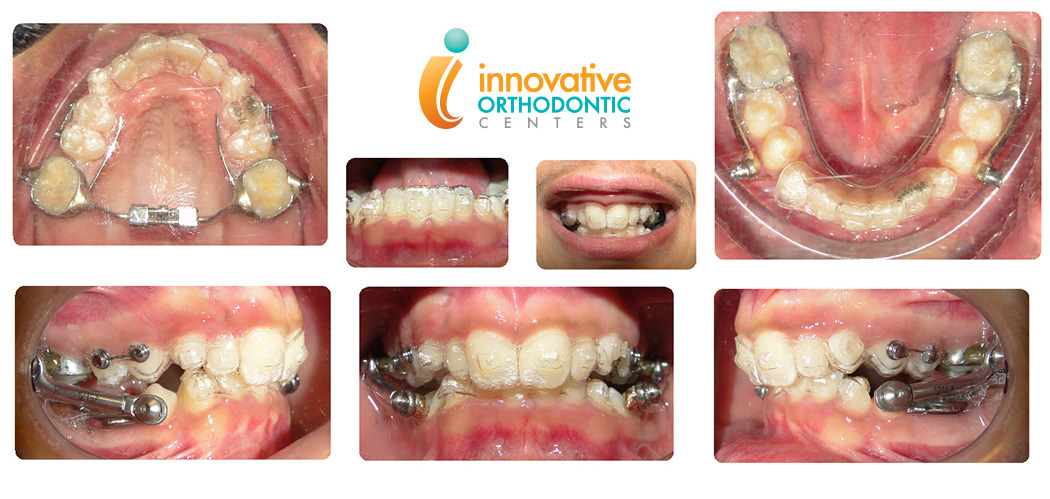
DynaFlex® CS®5
The DynaFlex CS5 is an orthodontic appliance that addresses bite discrepancies, like an overbite or underbite, without surgery or extractions. We use it if elastics alone aren’t enough to get great results or for patients who aren’t compliant with rubber bands. The device connects to the top and bottom braces. Since it’s hidden by your cheeks, it’s not noticeable. The design of the DynaFlex CS5 doesn’t interfere with jaw movement, making it extremely comfortable to wear.
How Does DynaFlex CS5 Work?
DynaFlex is like supercharged elastics. While braces straighten the teeth in each arch, DynaFlex CS5 provides the necessary connective force to reposition the jaw and align the bite (the way the upper and lower teeth fit together). Because the DynaFlex coils are attached to your wires, they don’t need to be changed like elastics.
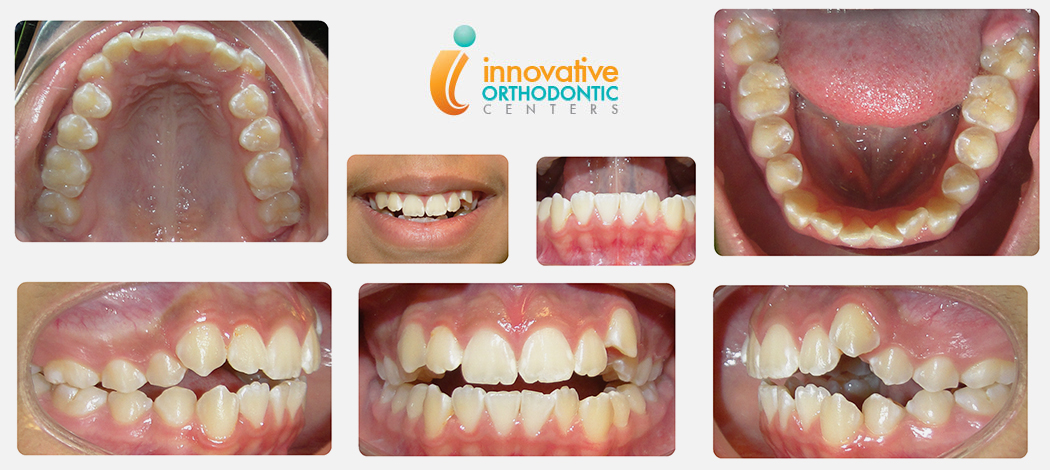
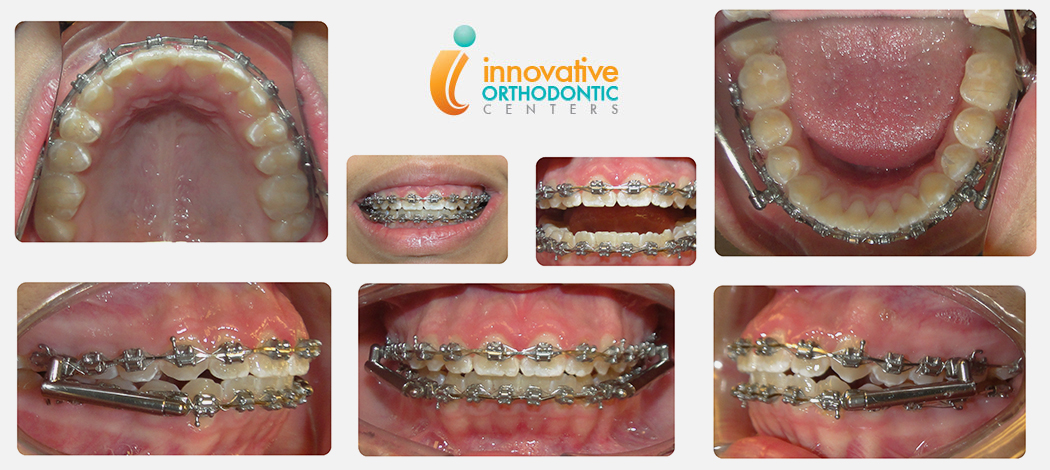
What to Expect With DynaFlex CS5:
- You may want to opt for liquids and soft foods for the first few days while you get used to your appliance.
- Teeth and jaws can be sensitive for a day or two. You can take an over-the-counter pain reliever like Tylenol or Advil if needed.
- Use a saltwater rinse (1/2 teaspoon of salt mixed in eight ounces of warm water) as often as you’d like if the DynaFlex irritates the inside of your cheeks during the adjustment period.
Face Mask Therapy With Expander
We may recommend an orthodontic face mask for an underbite in a growing patient. The appliance is designed to help develop the upper jawbone and correct a mid-face deficiency, which is when the upper jaw is underdeveloped as compared to the lower jaw. When the appliance is worn properly, face mask therapy can be extremely effective and help patients avoid the need for jaw surgery in adulthood.
Small upper jaw
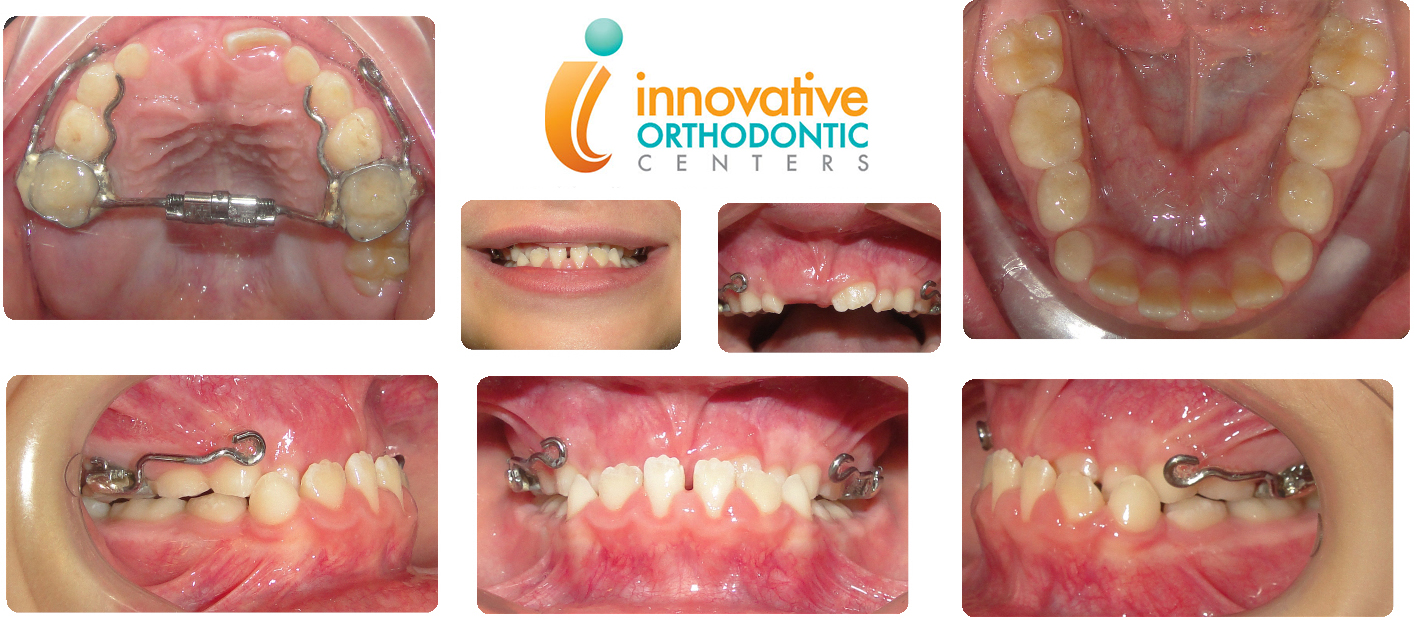
How Does an Orthodontic Face Mask Work?
The face mask is used in conjunction with your palatal expander. Hooks are placed on the expander and rubber bands are put on these hooks and then attached to the face mask. The effect of the traction from the rubber bands will encourage forward and downward growth of the upper jaw. You’ll be given different sizes of rubber bands to wear as treatment progresses. It’s important to wear the correct rubber bands for the prescribed period of time.
Your mask must be worn for at least 12 to 14 hours a day. We know sporting a face mask isn’t exactly fun but it can minimize the need for future jaw surgery and might even be the last viable option before surgery. We strongly encourage patients to use the appliance as directed. Your smile will thank you!
IMPORTANT: To reduce the risk of injury, do not wear the face mask while playing sports or other physical activities.
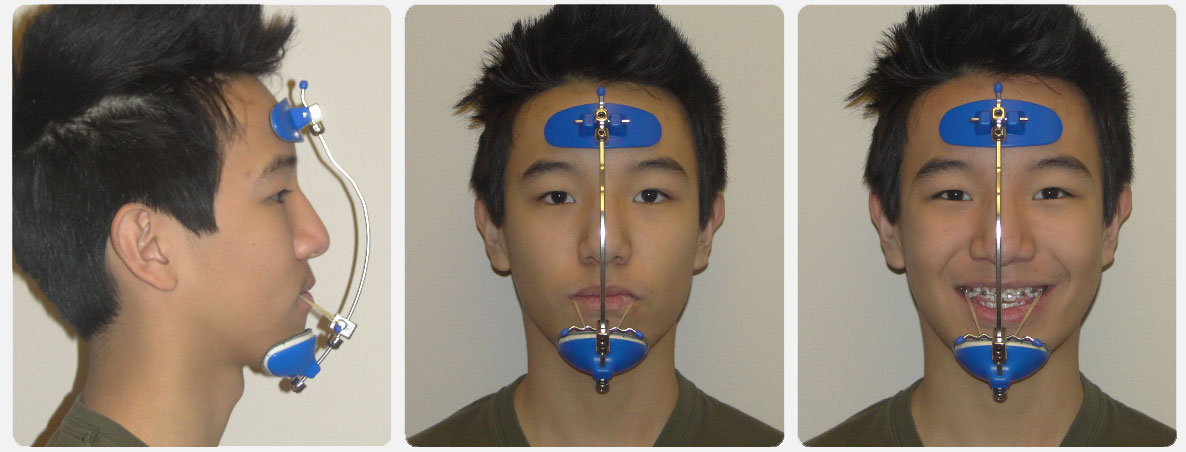
What to Expect With a Face Mask and Expander
- Just as with any appliance, it takes a few days to get used to wearing the face mask and expander.
- Stick to liquids and soft foods until you feel ready to tackle your usual meals.
- While you’re getting acclimated, swish with salt water (1/2 teaspoon of salt dissolved in eight ounces of warm water) three to four times a day to soothe irritation.
- If teeth or jaws are sensitive during the first day or two, take an over-the-counter pain reliever like Tylenol or Advil, if necessary.
Face Mask With Expander Before and After
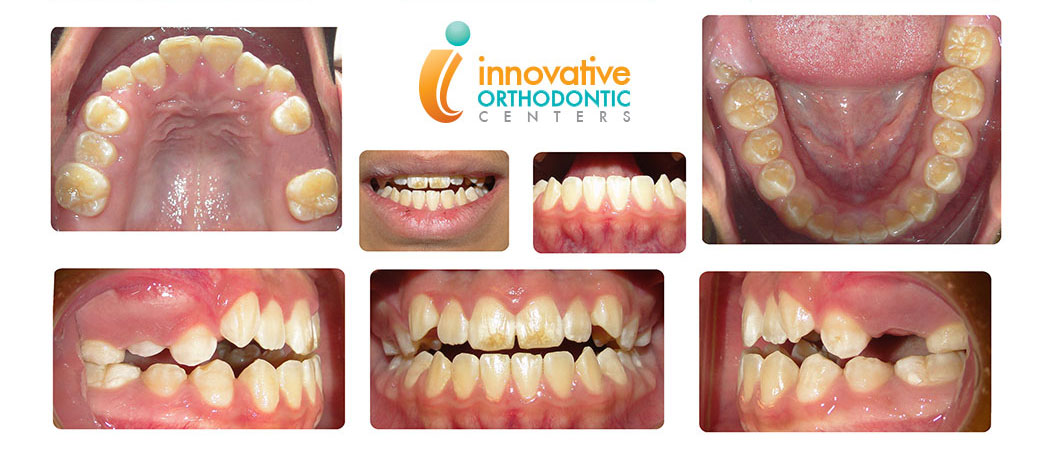
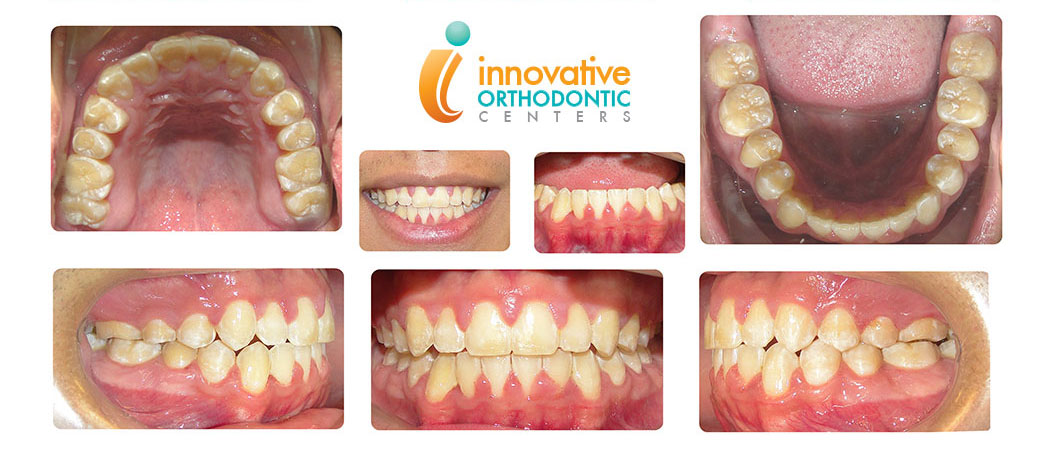
Expander
An expander is used to widen the top jaw creating a larger bone to accommodate all of the permanent teeth when they erupt and to minimize future crowding. Since this change is a kind of bony orthopedic change, the results will be stable and permanent once we achieve the necessary amount of expansion.
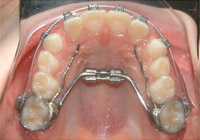
Expander
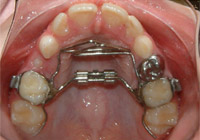
Expander & Habit Breaker
How Does it Work?
There are a few different designs for these expanders but all of them have a center screw that has to be turned with a key. The screw is usually turned for seven to 20 days. The expander is “activated” by placing the key into the keyhole in the center screw and then gently pushing the key towards the back of the mouth and throat one notch. After the turning has started, the front teeth will begin to separate. Don’t panic. This is a good sign and means the appliance is doing its job! After we’ve achieved the desired expansion, you’ll continue to wear the appliance to prevent relapse and allow the newly created bone time to fill in.
What to Expect:
- Sometimes, activating the expander causes slight discomfort. If needed, take Advil or Tylenol to alleviate it.
- There shouldn’t be any pain or bleeding. If there is, call our office immediately.
Fixed Palatal Expander
An expander is used to widen the upper jaw creating a larger bone to accommodate all of the permanent teeth when they erupt. Treatment can minimize future crowding and improve the bite. Since this change is a kind of bony orthopedic change, the results will be stable and permanent once we achieve the necessary amount of expansion.
How Does a Palatal Expander Work?
There are a few different designs for these expanders but all of them have a center screw. The expander is “activated” by placing the key into the keyhole in the screw and then gently pushing the key towards the back of the mouth and throat one notch. The screw is usually turned for seven to 20 days.
After the turning has started, the front teeth will begin to separate. Don’t panic. This is a good sign and means the appliance is doing its job! Once we’ve achieved the desired expansion, you’ll continue to wear the appliance to prevent relapse and allow the newly created bone time to fill in.
What to Expect With a Palatal Expander:
- Sometimes, activating the expander causes slight discomfort. If needed, take Advil or Tylenol to alleviate it.
- There shouldn’t be any pain or bleeding. If there is, call our office immediately.
Invisalign® Palatal Expander
At Innovative Orthodontic Centers, we’re one of the few practices to offer the metal-free Invisalign palatal expander system to correct skeletal discrepancies and bite imbalances in growing patients. The custom appliances are removable and virtually invisible alternatives to fixed palate expanders. Your child simply changes their expander each day and with every new device, the upper jaw expands bit by bit (no turning or screw necessary!).
How Does an Invisalign Palatal Expander Work?
Dr. Ibrahim and Dr. Gin create an individualized treatment plan on a virtual model of your child or teen’s mouth. The devices are then 3D printed in a series staged in small increments of movement. The appliance exerts gentle pressure on the midline suture, where the two halves of the upper jaw (maxilla) meet. In growing patients, the bone hasn’t fused yet, so with each new expander, the halves drift further apart, widening the jaw. Eventually, new bone forms in the center, stabilizing the expansion.
What to Expect With an Invisalign Palatal Expander:
- Sometimes, putting in a new expander causes mild discomfort. If needed, take Advil or Tylenol to alleviate it.
- There shouldn’t be any pain. If there is, call our office immediately.
- Remember, to get the best results, your child will need to change their expanders according to the orthodontist’s instructions.
Habit-Breaking Appliance
A habit breaker is a fixed appliance designed to block a patient from being able to put their thumb in their mouth. It stays in place for a full 12 months to fully break the thumb sucking habit.
How Does a Habit-Breaking Appliance Work?
A habit breaker creates a physical barrier, so a child’s thumb or fingers can’t make contact behind the upper front teeth. This takes away the satisfaction of thumb sucking, while also alleviating the pressure the habit places on the palate and front teeth.
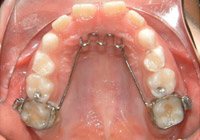
Habit Breaker

Expander & Habit Breaker
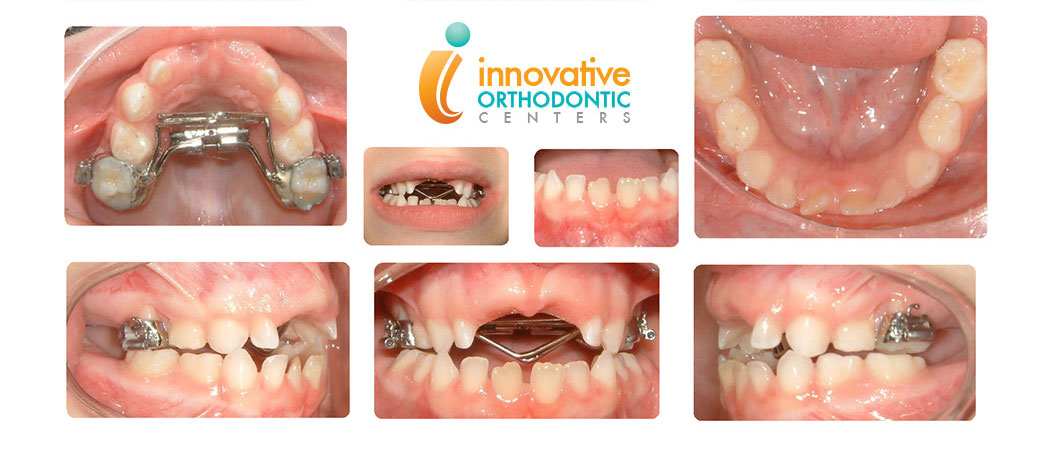
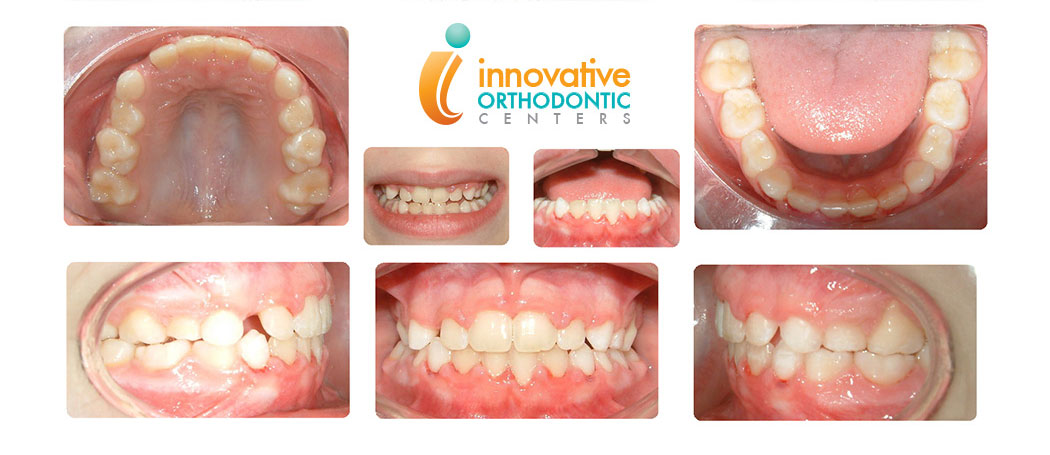
What to Expect With a Habit Breaker
- Many kids have trouble sleeping and become crabby for the first week or so while they get used to not being able to comfort themselves by sucking their thumb. Believe us, it will pass, but it will take some time.
- The appliance can make your child’s tongue sore and cause speech issues until their tongue learns to share space with it.
Upper/Lower Space Maintainer
When a child loses a primary tooth prematurely, the remaining teeth often shift to fill in the space causing misalignment. To avoid this, an upper or lower space maintainer can be placed between two or more primary teeth. The appliance is either fixed or removable depending on your child’s needs. It holds the place for the permanent tooth or teeth to erupt correctly. Once the grown-up tooth is in, we can remove the space maintainer.
How Does a Space Maintainer Work?
A dental space maintainer sits in the space the missing baby tooth once occupied, preserving room for the underlying permanent tooth to come in nice and straight. This helps to reduce the risk of misalignment, crowding and tooth impaction.
What to Expect With a Space Maintainer:
- When a space maintainer is first placed, your child’s speech might sound a little funny. This goes away once they’re used to having the appliance in their mouth.
- Space maintainers can boost salivary flow for the first few days but this will subside.
- If the appliance irritates the soft tissues in the mouth, have your child swish with warm salt water or place orthodontic wax over the part that’s causing discomfort. The cheeks and gums will toughen up quickly.
- Make sure your child is careful when eating hard or crunchy foods since they can damage the appliance.
- Fixed space maintainers tend to trap food. Brush thoroughly around it.

